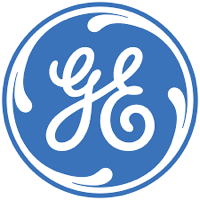 Every time a large corporation stumbles, you will see something along these lines: Having Too Much Employer Stock in Your 401(k) Is Dangerous. That doesn’t prevent it from being solid advice. The best advice bears repeating.
Every time a large corporation stumbles, you will see something along these lines: Having Too Much Employer Stock in Your 401(k) Is Dangerous. That doesn’t prevent it from being solid advice. The best advice bears repeating.
Why? If your retirement savings are heavily concentrated in your employer stock, you human capital and your investment capital are directly linked. If your company falters, then you can lose both your job and your retirement security. Past examples include Enron, MCI Worldcom, and Tyco. Remember that any individual stock can go to zero.
In a large, multinational corporation, even a mid-level executive simply won’t affect the bottom line that much. You could be doing a great job, but what if the top brass commits fraud, takes on too much debt, or otherwise mismanages the company.
This time around, it is General Electric (GE). Per Morningstar data, $100,000 invested in GE stock on January 1st, 2017 would be about $47,000 today. Over the same period, $100,000 invested in a S&P 500 index fund would be about $124,000. That’s a gap of over $75,000 on a starting balance of $100,000. GE may recover eventually, but even that won’t help a retiree who needs the money now.
The Fortune article provides a list of other large company 401(k) plans that have heavy allocations to their own stock. Some of these are highly-respected companies, but then again so was GE.
- Sherwin Williams (62%)
- Colgate Palmolive (56%)
- Exxon Mobil (54%)
- Lowe’s Home Improvement (50%)
- PACCAR (50%)
- Dillard’s Department Stores (48%)
- Chevron (44%)
- McDonalds (39%)
- Costco (38%)
- Cerner (37%)
In my opinion, things are different if you are a majority owner of a small, private business. Yes, you also have a lot of eggs in one basket, but you directly control that basket! In addition, your upside could be much, much greater.
Consider that Vanguard charges money for financial advice through their Vanguard Managed Account Program (VMAP). When they analyzed the before-and-after results from actual participants, they found that their biggest impact was simply helping people reduce their exposure to company stock. They found that 12% of participants initially had a concentrated position of 20% or more in employer stock.
If you’re reading this, you can implement this advice for free! Do not invest more than 10% of your 401(k) plan in company stock. Consider reallocating funds into a low-cost, diversified index fund or other similar alternative. (Companies themselves are not allowed to exceed 10% in company stock for pension plans.)
 The Best Credit Card Bonus Offers – 2025
The Best Credit Card Bonus Offers – 2025 Big List of Free Stocks from Brokerage Apps
Big List of Free Stocks from Brokerage Apps Best Interest Rates on Cash - 2025
Best Interest Rates on Cash - 2025 Free Credit Scores x 3 + Free Credit Monitoring
Free Credit Scores x 3 + Free Credit Monitoring Best No Fee 0% APR Balance Transfer Offers
Best No Fee 0% APR Balance Transfer Offers Little-Known Cellular Data Plans That Can Save Big Money
Little-Known Cellular Data Plans That Can Save Big Money How To Haggle Your Cable or Direct TV Bill
How To Haggle Your Cable or Direct TV Bill Big List of Free Consumer Data Reports (Credit, Rent, Work)
Big List of Free Consumer Data Reports (Credit, Rent, Work)
Thanks for the reminder. I currently have 5% in company stock. I am considering reducing that even further.
Great advice but do not forget to also include company stock positions in Employee Stock Ownership Plans (ESPP) and vested Stock Option grants.
I was recently burned of 20+ years of effort when a $30 stock price crashed and was bought out at $18 (partly funded by acquiring co stock) and that company’s stock crashed and was bought out for good at $9.
Taking on too much debt to fund acquisitions did them all in.
Great points.
How about a write up on not putting too much in your 401K period? People need to keep in mind that RMD might push them into a high tax bracket if they aren’t careful, and should diversify into tax free Roth and taxable brokerage accounts? It would be sad if people lost pounds of flesh to the taxman at the 20+% marginal rate when they could have alternatively paid 15% long term capital gains tax.